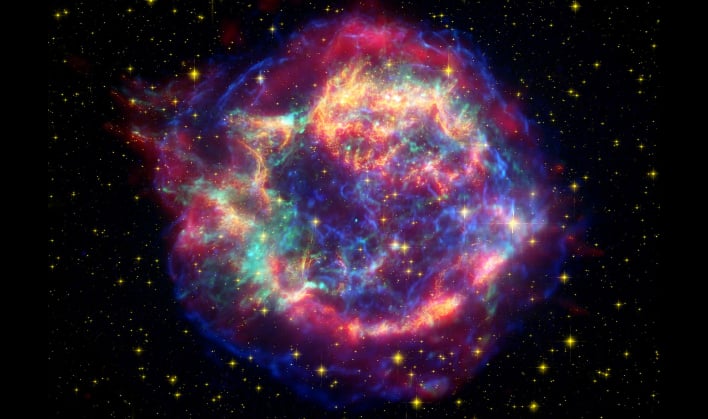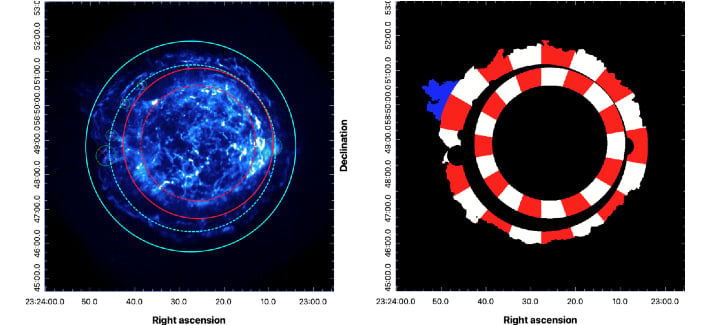A Spectacular Galactic Explosion Has Sent Reverse Shock Waves That Defy Supernova Models

Cassiopeia A is a gas cloud, or nebula, left behind by a supernova in the constellation Cassiopeia. The constellation lies approximately 11,000 light-years from Earth, which makes it one of the closest supernova remnants. New research has found that the shock wave from the exploded star has one section that is collapsing back toward the origin of the explosion in what the authors of the study refer to as a “reverse shock”.
The nebula is made mainly of hydrogen that was released before and during the explosion that tore apart the once upon a time star. Theoretical models indicated that the shock wave should be expanding evenly, much like a perfectly rounded balloon that is being constantly inflated. However, researchers have found this not to be the case.
“For a long time, we suspected something weird was going on inside Cassiopeia A,” stated lead author Jacco Vink, an astronomer at the University of Amsterdam in the Netherlands. He added that prior studies had indicated the internal motions within the nebula were “rather chaotic” and showed that the western region of the shock wave might very well be going in the wrong direction.
Researchers gathered images collected by NASA’s Chandra X-ray Observatory over a period of 19 years of the movement of the shock wave. This data seems to confirm that the western region of the shock wave is in fact traveling in the wrong direction. But they also discovered something else that amazed them, in that parts of the same region were still heading away from the supernova’s epicenter.
Vink suggests that something happened in the aftermath of the star’s explosion that caused the reverse shock wave to occur. Researchers believe the most likely explanation is that the shock wave collided with another shell of gas that was likely emitted by the star before it exploded. Vink added that as the shock wave interacted with this gas, it may have decreased in speed and created a pressure buildup that pushed the inner shell back toward the center. However, the outer shell may have had enough force to pierce this blockage and thus begin to accelerate again on the other side.
“This explains both the inward movements of the inner shell but also predicts that the outer shell should be accelerating, as indeed we measured,” Ving stated.
The origin star most likely had a mass of around 18 times that of our sun when it was first created. Vink said, “X-ray estimates suggest that the star was around four to six times the mass of the sun during the explosion.” This would mean that the star lost about two-thirds of its mass, most of which would have been hydrogen, before it exploded. Vink suggests that the shock wave could have later collided with this gas.
While there are other theories as to why Cassiopeia A lost so much mass before its explosion, the researchers of the new study are not convinced. One theory suggests that there were two stars, part of a binary star system and that the companion star may have gone supernova before Cassiopeia A and then ripped away a large portion of the remaining star’s outer skin of hydrogen via the wind of the first supernova.
At this point, all the ideas presented are merely theories. Vink said, “The only problem (with the prior theory) is that we have not yet found the remains of the other star. So, at this stage, it remains speculative.” Perhaps once the James Webb Space Telescope becomes fully operational, more detailed images can reveal the answer.
Top Image Courtesy Of NASA/Chandra X-ray Observatory


